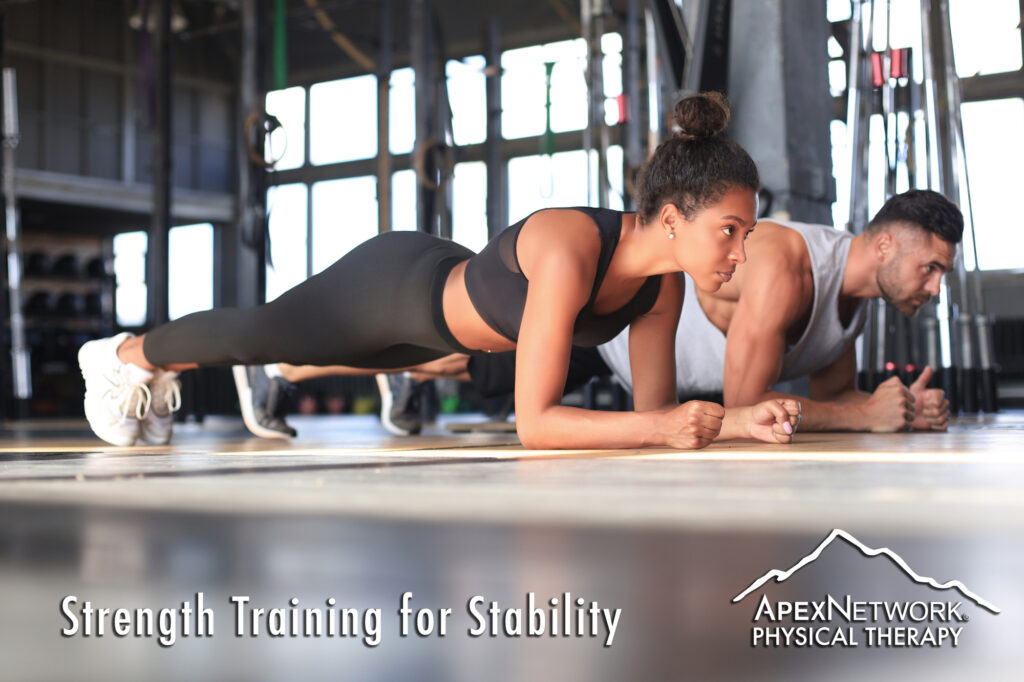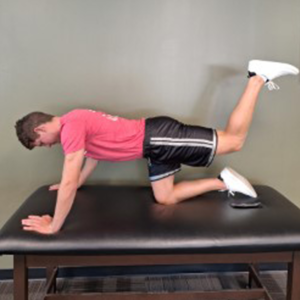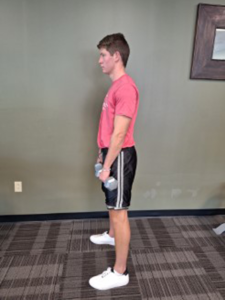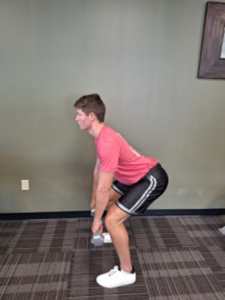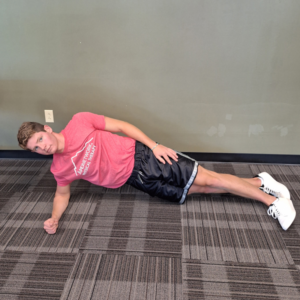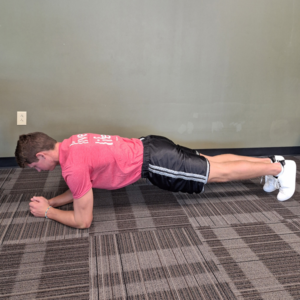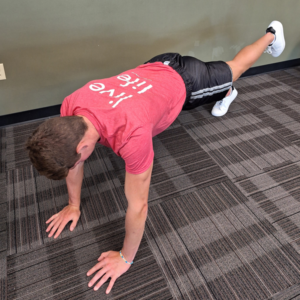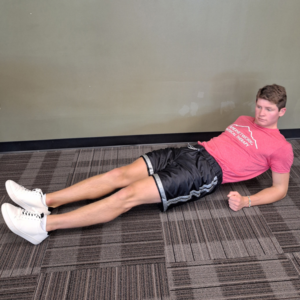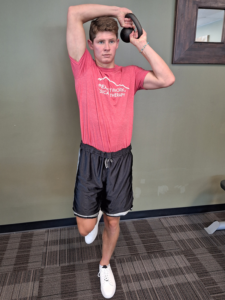In order to stay healthy and keep your body strong and able to sustain the workload of marathon training it is a good idea to add some strength training into your weekly routine. If you are not currently doing strength or resistance training now is a critical time to start and make sure you are doing so at least 2-3 days per week. Strength training will help build overall muscle, joint, and tendon strength and will result in increased endurance, increased neuro muscular coordination, and increased power, which in turn makes you less susceptible to injury.
In this post, I have assembled some extremely helpful and simple movements to give you a routine to start if you do not already follow one. This can be performed with lightweights, household objects, and even body weight for resistance. The important thing is that you are doing the movements, even if you do not have weights or are not going to a gym. These exercises can be performed at home with minimal equipment and can still improve your strength and performance.
Important Strengthening Exercises
These first 4 exercises emphasize good form, posture, balance and engaging powerful muscles such as the gluteals and hamstrings. The gluteals are powerful hip extensors that allow for propulsion and help rotate the hips. They are also incredibly important for good posture and form, which is important to maintain, especially when long runs start to fatigue out most muscles and form will start to fail.
Bridge
Begin with lying on your back and feet hips width apart, with knees bent in a hook lying position, keep shoulders, hips, and knees in alignment as you push through feet and raise hips toward ceiling, squeeze gluteal muscles at top, hold 5- 10 sec duration. If you feel tension in your back, drop hips slightly, try to increase duration of hold with spine lifted to ensure proper gluteal contraction. Repeat 10-15 reps 2-3 sets.
Unilateral Bridge
Begin with lying on your back and feet hips width apart, with knees bent in a hook lying position, lift one leg off table and push through single leg, raise hips toward ceiling, squeeze gluteal muscles at top, hold 3-5 sec duration. If you feel tension in your back, drop hips slightly, try to increase duration of hold with spine lifted to ensure proper gluteal contraction. Repeat 10-15 reps 2 sets each leg.
Donkey Kicks
Begin on all fours, come up onto hands and toes, keep spine straight and perpendicular to floor, lift one leg toward ceiling keeping knee 90 degrees, return to start position, repeat alternating legs, work up 2 sets x 15 reps each leg. Purpose: Neutral spine, deep spinal stabilizers used as you alternate hip extension, increased repetition reinforces good posture, will be able to maintain for longer endurance running
Reverse Deadlift
Begin with weights in hand, back straight and feet slightly wider than hips. Keep back straight and hinge forward from hips as is sticking butt out to reach for a chair. Slowly lower trunk as you bend knees and bring weights to about knee height, return to upright by driving heels into ground and engaging gluteals and hamstrings to pull pelvis under and return o upright position. Start with 3x 10 reps, increase to 3 sets x 12-15 reps.
Core Strengthening
A key muscle group that helps stabilize the spine when you run is the core. But it refers to much more than just the 6-pack muscles everyone thinks about. Core muscles support the entire trunk, from shoulders down to waist. They include rectus abdominus, obliques, diaphragm, lumbar and thoracic extensors, and deep transverse abdominal muscles. To properly train and engage all these groups I suggest doing a variety of core stabilization exercises in different positions to challenge them as a unit.
Side Planks
Start by propping yourself up on one elbow, bent 90 degrees shoulder stacked over elbow. Raise your hip from floor so upper body is straight, challenge is to not move into frontal plane maintain lateral position without twisting by keeping hips and shoulders stacked and back straight. Hold this position for 30 seconds, buildup to 3x 30 sec each side. For modification you may also start with knees bent and have knees on floor and progress into a full side plank, or rest arm on bench, chair, or sofa for incline side plank.
Front Planks
Start by propping yourself up on elbows, bent 90 degrees shoulder stacked over elbows. Raise your hips from floor so spine is straight, knees straight and rest on toes and forearms. Hold this position for 30 seconds, buildup to 3x 30 seconds.
Plank Front raise
Assume a forward plank position but lift up onto hands and toes, with elbows straight. While maintaining a straight back and not rotating through hips, lift one arm straight forward as if reaching out ahead, hold 2 seconds, repeat 10x each side.
Plank Hip Extension
Assume forward plank position but lift up onto hands and toes, with elbows straight. While maintaining a straight back and not rotating through hips, lift one leg slightly off ground, hold 2 seconds, repeat 10x each side.
Reverse Plank
Rest on back keep spine straight as you lift up from floor onto elbows and heels, keep hips lifted to keep spine straight and do not let hips sag. Try to hold 30 seconds and repeat 2-3 sets.
Pallof Press Squat
Attach a band to a point that is chest height and stand perpendicular to band, position self far enough to create tension. Have feet just slightly wider than hips, extend shoulders and elbows out in front so band is center of body, aligned with sternum. The tension should feel as if it will twist the body, do not twist, maintain shoulder, and hip alignment and proceed to perform squats. Perform 2 x15 reps each side. This movement not only works the gluteals, quads, and back for the squat, but the added resistance from the band will engage the core and obliques to allow for greater engagement, spinal stabilization, and help with decreasing rotation.
Single Leg Stance
The next two exercises are great for adding stability and control as all of running is single leg loading. Single leg loading helps control the trunk on the hips and helps develop good neuro muscular control. It also is extremely important for increasing tensile strength in lower extremity tendons and ligaments that help stabilize our joints such as the hip, knee, ankle, and foot. Single leg exercises can also help you correct some muscular imbalances and improve form.
Single Leg Hallows
Stand on one leg with a weight approx. 10# in hand, maintain single leg balance by using whole foot for balance. Drive big toe into ground and maintain contact with forefoot and heel. Bring weight overhead and circle around head, as arms go overhead tighten core and maintain a neutral spine repeat 15- 20 reps each direction, try not to arch back.
Single Leg Step Down
Use a low step, staircase, or box. Stand on edge, while engaging your core hinge hip backwards while simultaneously bending the knee on the step.
Don’t let your knee collapse inward and keep your pelvis level, hold onto something for balance if you cannot maintain a level pelvis. The goal is to be able to come down as far as you can without dropping your hip/pelvis on the leg in the air. Lower and lift body 2 sets 10-15 reps each leg.
WRITTEN BY: Angela Dirnbeck PT, DPT, CMPT.
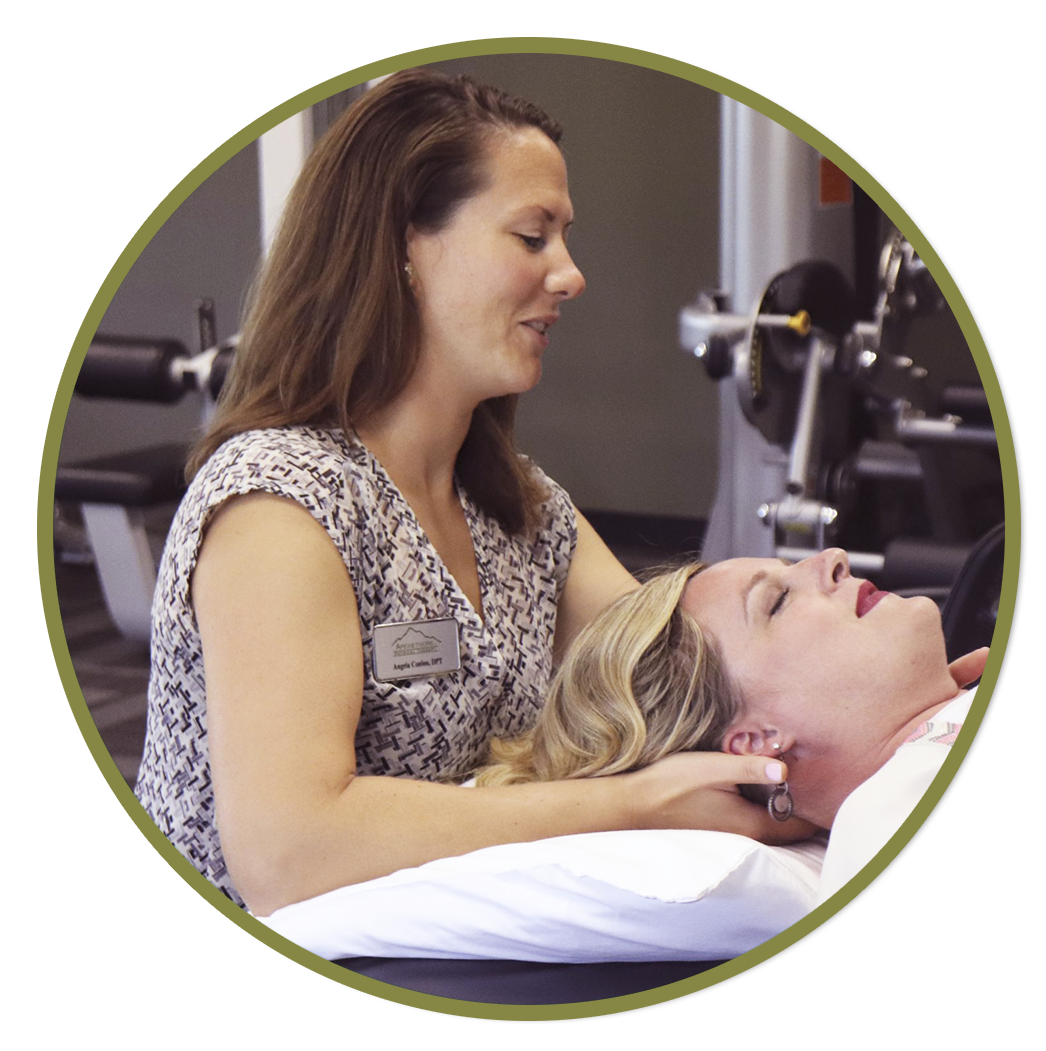 BIO: Angela is a Physical Therapist and clinic manager at the Chesterfield ApexNetwork location in Chesterfield, MO. She graduated in 2013 with her Doctor of Physical Therapy from Des Moines University. She has extensive training in manual therapy and a certification from the North American Institute of Orthopedic Manual Therapy (NAIOMT) and has been with ApexNetwork for almost 10 years and enjoys treating a variety of orthopedic and musculoskeletal injuries, including runners and endurance athletes. Angela has a comprehensive understanding of injury prevention and treatment being a distance runner herself for > 20 years. She competed as an NCAA D1 athlete in cross country and track for the University of Dayton. Following undergraduate competition she began running half marathon and full marathon distances, completing 4 marathons, 2 of which were the Boston Marathon. Over her years of practice, she has incorporated a lot of her experience and knowledge into treatment and patient care and has helped many patients and athletes rehabilitate and teach biomechanics for greater awareness of injury prevention and return to sport.
BIO: Angela is a Physical Therapist and clinic manager at the Chesterfield ApexNetwork location in Chesterfield, MO. She graduated in 2013 with her Doctor of Physical Therapy from Des Moines University. She has extensive training in manual therapy and a certification from the North American Institute of Orthopedic Manual Therapy (NAIOMT) and has been with ApexNetwork for almost 10 years and enjoys treating a variety of orthopedic and musculoskeletal injuries, including runners and endurance athletes. Angela has a comprehensive understanding of injury prevention and treatment being a distance runner herself for > 20 years. She competed as an NCAA D1 athlete in cross country and track for the University of Dayton. Following undergraduate competition she began running half marathon and full marathon distances, completing 4 marathons, 2 of which were the Boston Marathon. Over her years of practice, she has incorporated a lot of her experience and knowledge into treatment and patient care and has helped many patients and athletes rehabilitate and teach biomechanics for greater awareness of injury prevention and return to sport.

